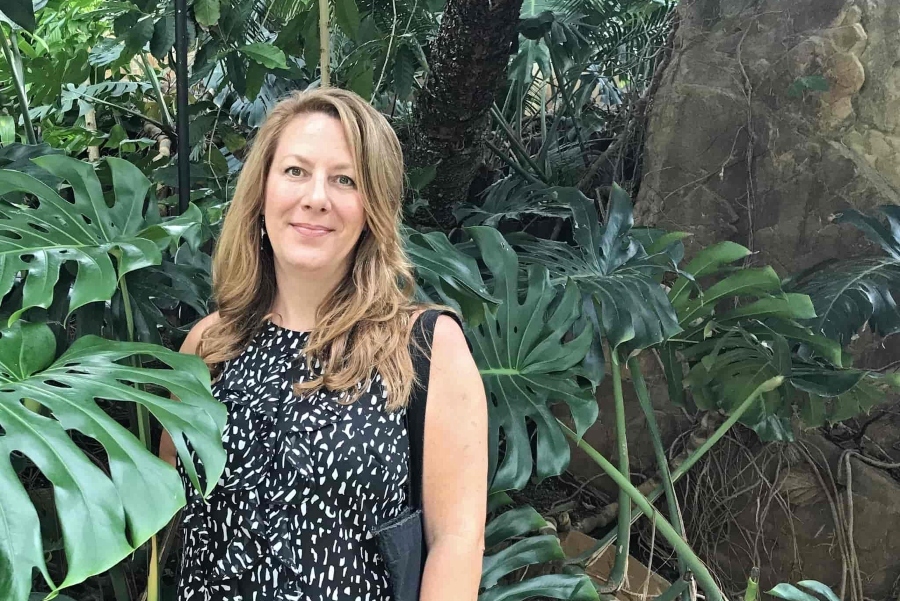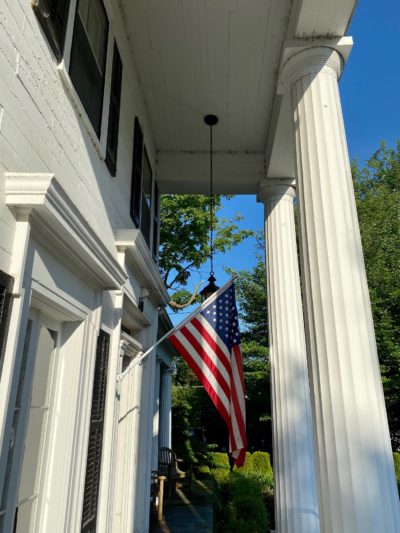Importance of Connection in Recovery – Limelight Interview

The importance of connection – Sanford House at Cherry Street for Women.
The historic home at 540 Cherry Street, Grand Rapids, Michigan, has stood the test of time. Now, as Sanford House at Cherry Street for Women, it exudes strength and safety, serving as a port in the storm during the COVID-19 pandemic, when the importance of human connection is clear.
In-Person Addiction Treatment in a Pandemic
The subject of our Limelight Interview, Caroline Boynton, LMSW, CAADC, conducted one-on-one and group sessions virtually during the lock-down period. But she is back in-person at Cherry Street, with the increased stringent policies and response protocols of COVID-19.
Don’t go through it alone. If our clients don’t remember anything else, that is the most valuable information to keep in mind.
Caroline Boynton, LMSW, CAADC

Importance of Connection – Limelight Interview Caroline Boynton, LMSW, CAADC
1. You spent a couple of months conducting sessions via telehealth. How did that go?
Actually, I was pleasantly surprised by the telehealth experience. I was wondering how it would work. But everyone “showed up” for group, and it works from a technical standpoint. It felt like our clients were anxious to make the connection.
What about the COVID-19 protocols now that you are in Residential?
Well, the mask is a barrier. And the physical distance, no outings … we still use telehealth in the house for evening 12-step meetings and alumni groups. And the women go for walks around the neighborhood and get fresh air on the porch.
2. Welcome back from the virtual world – what is your primary focus as a therapist at Cherry Street?
I am laid back. I have a silly sense of humor and my goal is to make people comfortable, at ease and not judged.
3. What is your treatment philosophy – those things you know to be true about addiction therapy?
Things I know to be true? Family therapy and incorporating the family dynamic is important. The importance of connection – do not go through this alone. Anything that puts you in the driver’s seat of your thoughts. Because thoughts drive actions. Stay physically active and engage in positive self-talk.

Standing the test of time – Sanford House at Cherry Street pillars of strength.
4. Why did you become a therapist?
I am fascinated with the puzzle. What’s going to work for each individual and what are the influences that drive the problem.
5. What is the key to success in recovery?
You know, I came up as a therapist through the child welfare system and school system. I have practiced home-based and family therapy. And I believe in a healthy family system, and I’ll say it again, not going through this alone. There are some UK based studies and a book by Johann Hari called Chasing the Scream, that underscore my philosophy – that the opposite of addiction is connection. And that community and connection on a gut level works in recovery.
6. What about the pitfalls? Forgetting the importance of connection?
Not using or establishing your support system. You have to pick up the phone. It was interesting to me that our clients who had had some measure of in-person treatment before COVID-19 were clamoring to get into virtual treatment – the commitment was already there. Once you are in a program, it is easier to stay connected and to see the benefits of connection.
7. What is the “fun” part of your job?
Figuring out the individual puzzles. The laughter, intimacy and inside jokes we share with the women at Cherry Street. It’s all about the cohesiveness – the shared experiences …
8. And the challenges?
I am trained to listen. So, sometimes group sessions are a challenge. Guiding the conversation away from someone who is monopolizing the conversation, for example.
9. Do you read for pleasure?
Yes. I love anything that is well written. Because of this I often choose the classics. I like John Grisham novels. And another favorite is The Dog Who Saved Me, by Susan Wilson.
10. What is your favorite journey?
A road trip with my twelve year old daughter in Northern Michigan is my favorite literal journey.
11. What makes Sanford Addiction Treatment Centers unique?
Everyone here wants to work toward a common goal – to help those with substance use disorders in a meaningful way. The staff and programs are thorough – we address every client with a fine-tooth comb. And the feedback I get from clients is that we get to the core of the problem. And we address mental health and the family system. It’s not so much about the food or pretty location (although that’s nice). It’s our ability to go into such depth to help our clients in a lasting way.
12. What are your most marked characteristics?
I am laid back and easy going.
13. What are the phrases you use most often with your clients?
You guessed it – don’t go through this alone. And it’s powerful to see you in the driver’s seat.
14. Last, but not least, do you have a motto?
Don’t go through it alone. If people don’t remember anything else, this is valuable to remember.
Got it! Thanks Caroline. SH


